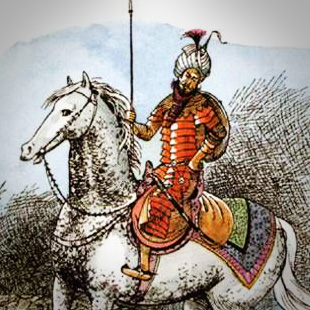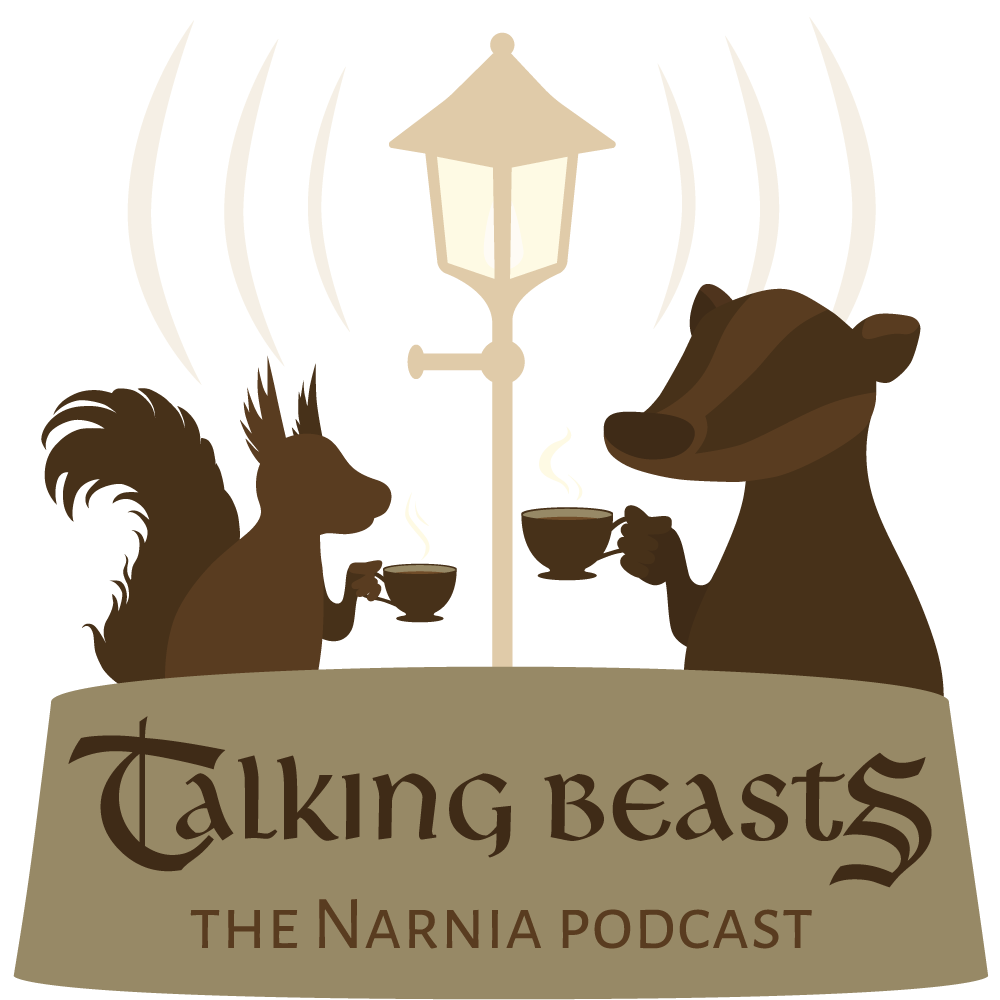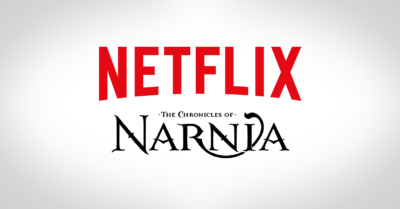Racism in The Chronicles of Narnia? Let’s Talk… | Talking Beasts
 Picking up our commentary on The Horse and His Boy right where we left off! Shasta, Bree, Aravis, and Hwin are nearing the city of Tashbaan… and this is probably the best place to address accusations of racism in C.S. Lewis’s description of Calormen culture. (If you really want to dive into this issue, read Dr. Devin Brown’s excellent article)
Picking up our commentary on The Horse and His Boy right where we left off! Shasta, Bree, Aravis, and Hwin are nearing the city of Tashbaan… and this is probably the best place to address accusations of racism in C.S. Lewis’s description of Calormen culture. (If you really want to dive into this issue, read Dr. Devin Brown’s excellent article)
Regardless of the C.S. Lewis’s actual intentions, is this a valid reaction to the text? And how should the Calormens be handled in a future movie adaptation?
We get into that around the 23-minute mark of this episode. But first, we read a few of your comments and discuss the themes of family and separation. Listen and enjoy.
– Glumpuddle
Think you can stump a NarniaWebber? Send trivia questions to podcast[at]narniaweb.com with “Stump” as the subject.
Voices of NarniaWeb: Send your 1-3 minute audio file to podcast[at]narniaweb.com with “Voice” as the subject. Suggested talking points:
- Begin with your name/alias and location (country or state will suffice)
- How you discovered Narnia, first impressions
- Favorite book, character, scene
- Anything else you’d like to say about Narnia, what it means to you, your reactions to the movies, etc.
The C.S. Lewis Minute is brought to you by William O’Flaherty from EssentialCSLewis.com.
Be a talking beast! Post a comment below or in the Facebook group.
Podcast: Play in new window | Embed






Great episode! Though it's weird to hear my own voice in it. Lol
I agree with everything you guys said on the racism is issue and I think you bring up any excellent point about the Calormens are critiqued on their values and not on the color of their skin, thats something that often gets overlooked. Racism is a terrible thing and a serious thing, but I think that term gets used to loosely in todays society, I can understand why some people see the portrayal of the Calormens as racist or insensitive, but if you really examen the books I don't think those criticisms don't hold water.
While I do like the Arabian ascetic of the Calormen culture, I don't think I would have a problem with it being changed in a film adaptation.
Great episode. Love the comment on John Williams being the "Meryl Streep" of movie scores. That made me laugh. As for "racist" Calormen stuff, I'm not sure what could be done about their look. There is no way you can please everyone. If you make them darker skinned, they'll say it's racist. If you don't, they'll say it's "white-washing" and you're putting a bunch of middle-eastern actors out of work. I really like the Arabian setting of HHB and would rather they change Shasta's ethnicity and the ethnicity of Archenland. We spend most of the book in Calormen and I'd rather the vivid aesthetic from the book be maintained and let Archenland be the kingdom that is played around with by the movie studio. If these Narnia kingdoms were characters, Archenland is a minor supporting character to me, so I feel it more fitting to change it's aesthetic design than Calormen. That way, it's not a "white is good, dark is bad" argument. You literally would have to look at their culture's values and ways of living to tell what kind of people they are.
If there is ever a movie adaptation made of ‘Horse and His Boy’ I am open to elements of the Calormen culture being modernized or changed, AS LONG AS THE FILMMAKERS DON’T PLAY IT SAFE. The attitude Lewis has to Calormen culture is slightly negative and mocking, partly due to their values, partly because Lewis did not grow up in a supposed post-racist society. Not vilifying Real other cultures is important, but so is calling out cultures of evil. Regardless of color/gender/class.
His feelings for Calormen are not safe PC emotions but are still importent to the Story of Shasta.
I would be open to Shasta being darker in skin tone than in the book (the Calormens consider him fair and white, Lewis never explicitly states this himself) though that might take away from the Celtic background of Archenland/Narnia. A mixed-heritage ancestory for Shasta In the movie adaptation would be creative and interesting: He looks Both like Aravis/Rabadash/Laseraleen and like the High Kings and Queens of Narnia. Might make the Archenlanders more intersesting as a country.
Then again, Narnia is not the story to reinvent the wheel, polically. It’s old fashioned to the tenth. Sticking to the virtuous elements from the books are the most important descisions
Also, I agree with Glumpuddle: ‘The Shape of Water’ was a disapointing Best Picture Winner.
‘Get Out’ or ‘Dunkirk’ should have won instead.
This is not directed at you, but at the rascism topic discussion:
Racism in the States is constantly overlooked. Not the other way around. Call it the corruption of an evil culture etc. Call it whatever you like. You only have to look at Native American communities to see that US culture actively ignores their wellbeing.
Whatever skin tone the Calormens have is a destraction from the fact that they are a majority in the Narnia stories, not a minority, and bestow few acts of kindness to surrounding countries. I like to think I’m a patriot, but I’m ashamed at what goes on with my own. I hope Americans see themselves in the Calormens.
There would be less accusations from ‘’them’’ about whitewashing dark characters from the books than of racism, because I dought ‘’they’’ have ever read the Narnia books, much less remembered or respected them. I agree, though. You can’t please everyone.
I think it's likely that the portrayal of Calormen reflects racism or prejudice on his part but I don't necessarily consider the book itself racist. If a black person feels insulted by it and can't enjoy it, I respect that but it doesn't make me feel like I shouldn't read it. (I don't know if the books have every been published in the Middle East so I'm not too worried by them offending people who will never read them.)
My guess is the book would influence children to be racist if they were in a household that was already inclined that way. If they were growing up in a household that wasn't racist (like myself), I don't think it would influence them that way.
By his I meant Lewis's.
Calormen is corrupt because of its corrupt government and greedy, power-hungry Tisrocs. Corrupt government is not limited to one culture. Racism has nothing to do with villainy unless one believes that the color of one’s skin is the determining factor. That is certainly not the case in HHB.
Another thing I believed was discussed somewhere in the forum was whether or not Lewis indulged in orientalism. Rillian nailed it when he said that Narnia and Calormen are both a mish-mash of cultures. The accusation of orientalism is not valid, because it’s a fantasy world. That’s what fantasy cultures are, fake cultures made of bits and pieces of real ones. Narnia is a more medieval European mashup, and Calormen is a vaguely eastern mashup and no more racist or disrespectful than Narnia.
As to how to handle Calormen in a movie, it may be just as dangerous to try to change it as to leave it. If you change it people will complain that you’ve white-washed it, or purposely tried to leave out (insert culture of choice here). If they really want to avoid the Middle East/India, one option would be to base is more on medieval Spain or Asia. There’s a lot less tension around those areas at the moment, but they are still similar to the book and would work well visually (think of the Alhambra palace). I really think that Lewis’ main inspiration was India, and in my opinion there would be no problems depicting it as such.
I know you were writing about real life social issues, but I appreciate something you pointed out relating to the Calormenes. They were a much bigger more powerful nation than Narnia. If this is shown very clearly in the movie (presuming there will be one) perhaps that would help prevent accusations of racism. In modern society racism is more often tied to minorities. Of course smaller groups can be racist against larger groups, but the type of people the filmmakers would have to appease don’t seem to focus on that as much.
I know the Alhambra is more Arab than Spanish, but I do like the look of Spanish architecture.
I just noticed I made a typo, what I meant was
"but if you really examen the books I don’t think those criticisms hold water"
I'm probably going to get flamed for saying this, and doubtless I'll deserve it, but I kind of like that Calormen culture is a vague Eastern mishmash. In modern fantasy books and movies, if there is a villainous group, the group is made to look Western. The reason for this is usually that the work's creators themselves are white, and don't wish to insult other cultures or ethnicities. This is very commendable of them but eventually it gets boring if all the villains are the same.
When I read about the Calormens, I'm not thinking, "These villains resemble stereotypes of Middle Eastern and Indian people. Man, I hate those guys! This is going to be good." What I'm thinking is, "Oh good! A different and interesting villainous group. What a refreshing change from all the stereotypical pseudo European villains like the Telmarines."
I definitely understand why moviemakers wouldn't want to encourage White Supremacists though.
I am so tired of making everything about racism. Kind of like straining at a gnat and swallowing a camel. Can’t read into this what someone thinks Lewis was saying. Pretty sad.
While I think that Calormen is definitely a mishmash of cultures, I tend to think most of the paganism of the ancient Middle East. The Calormene religion is polytheistic and they sacrifice men on Tash's altar. Compare Tash, for instance, to a god like Moloch of the ancient Canaanites.
Long-dead Middle Eastern religions don't exactly have a strong hold on the public imagination, though. If the filmmakers wanted to drive home the ritual human sacrifice angle—and they probably should, if they want to avoid being compared to religions in today's world—then they might consider blending some Aztec flavor into the Calormene culture since it's well-known that human sacrifice was a major aspect of the Aztec religion.
But yeah, I'd be open to a creative re-imagining of the aesthetic in Calormene. Pauline Baynes doesn't need to have the last word.
I also think that Archenland could be a mixed race culture. Truth is, they are: Archenlanders are descended from the children of King Frank and Queen Helen, and their kids married dryads, naiads, wood gods, and river gods. They are not completely human and I think emphasizing their nymph/nature god ancestry could be a good idea. Beyond that, I think it's quite possible that Calormenes and Archenlanders could have intermarried before the time of Shasta and Aravis. Even in the Pauline Baynes illustrations, King Lune and some of the courtiers are wearing turban-like headgear. Though more like a chaperon from the Middle Ages than the Calormene style of turban, it's still a potential way to indicate shared culture between the countries.
I watched a review of this book and she said she doesn’t know if it was intentional if Lewis was basing the Colorman empire on Islamic Empire, a lot of people have said he has but I’m not gonna say he did it on purpose and she said that the colormam empire is a reminder of the Ottoman Empire.
Bree is my favorite character in this book, mostly because I just think he’s funny. But I have to say that Shasta would have to be my third favorite human character. He and His story kinda reminds me of the story of Moses. His story of him being a Hebrew slave and his mother sent him away as a baby and was adopted into the royal family, but Shasta’s is kinda the opposite, he was born as a prince but was sent away, even though he was kidnaped, and was adopted and was about to become a slave.
Hmm, that would be interesting if they would make his skin darker and not look like a Narnian, if HHB ever does get made into a movie. I would actually like them to cast actual Arabian actors and Id b open to Peter making an appearance in it, it’ll be great if they have a scene of him in Cair Paravel,
I actually agree with Dot, I don’t want him in Tashban, because that’s Edmund and Susan’s moment but if he leads the charge down to Anvard, that could work.
I actually never cared much for the city of Tashbaan. It was one of my least favorite parts of the book. It's kind of tedious when the horses and the Shasta and Aravis go through it. It seems like Lewis meant for us to dislike the city, and perhaps some people see that as a negative statement about its culture– even though that may not have been his intention. Perhaps Lewis should have made Calormen more attractive and pleasant like Narnia and Archenland. Then I might also have liked it better. 🙂
Tashbaan resembles any overcrowded city you care to point a finger at, especially one where the leadership thinks more of their own position than the responsibilities of leadership to the people being led. I agree that I can think of one city in particular, as it may have been in 1914, when the last Sultan had already gone, as it was in its beginning, as Byzantium, its life of more than a thousand years as Constantinople, until 1453 AD when its last Roman Emperor fell in battle, and the sheer impact of this particular city on the entire direction of world history. One city I've visited has chaotic traffic even today, even though they don't have slaves any more, litters and sedan chairs, and the place is much cleaner. However the streets are still narrow, mysterious old streets just as they have always been. And the crowds, these days dressed western-style. I hope they keep in any movie Tashbaan as it is described in the book, with the main temple/church/mosque/museum as it is now, adjoining the Royal palace, all pavilions and rooms, and easy to get lost in. And I rather like the idea of the Tisroc all draped in jewellery, bobbles, with a funny hat and plonked down on an overstuffed sofa, rather than an actual throne.
Well, according to Lewis' Narnia world timeline, the Calormens are actually descended FROM renegade Archenlanders, so seeing traces of similarity between the two cultures could be interesting.
That's a great point! I had forgotten about that detail from the timeline.
Let me pose this question: Did you ever read all seven of the Chronicles and come away with a sense of racism or hatred toward any people? No? I didn't think so. These books are a gift that C.S. Lewis gave to the world. This issue of racism is threatening to undo us. Have we truly reached a point where we're tearing down great literature in the name of racism? Yes the bad guys wear turbans and have dark skin. That doesn't make these books or C.S. Lewis racist. I think we need to "re-learn" what the term "racist" actually means. Portraying people in a negative light is not racism. Should witches be offended for the sake of the White Witch or the Lady of the Green Kirtle? The Calormenes lived in a society of slavery and forced marriage. Should we be cool with that so we don't come across as racists? They're just antagonists of a book series everybody. Not every single thing is cryptic racism or an attempt to perpetuate the demonization of a certain religion. Wake the hell up. You're better than this!
The disguises worked although it was kind of humiliating for Bree. Shasta came pretty close to being caught. "It's my master's orders, so there." I was a bit surprised that nothing else came of that, considering that the Caloromenes seemed to believe that Bree was a war horse, which was difficult to cover up. The negative experience of children being struck or beaten (as Shasta was since he was considered nothing more than a slave) makes Tashbaan seem like an unpleasant place.
I really just want to see Aravis wearing Indian (bollywood style) dresses while visiting Lasaraleen.
If they make a film I think they'd have to make sure that they're are more good Calormians. Another thing that would be difficult in a film is dealing with the child marriage. They'd probably have to age up Aravis and Shasta to at least 16 year-olds. For the whole giving Aravis into marriage thing to happen. Or they could change it to Aravis having to run away to escape being killed by some usurper.
Also love the song you threw in there
Just a couple of quick thoughts. If filmmakers did decide to change Calormene culture to make it less Middle Eastern, I'd like to see them pursue other real-ish or historical options based on what we see Calormen being like–the emphasis on poetry and wise sayings, the jewels and frills and ruffles and general facades that people put up.
Also, I had never really thought about the materialistic aspect of the culture before. And this is the culture Susan was fairly seriously considering marrying into. It kind of fits into her later character arc.
As has been mentioned, Aztec influences would be a good idea. But so would Sumerian/Babylonian and maybe even Chinese. The broader the range of elements in the mix, the less any one group could be offended.
I agree with the color aspect you're making. If I were making the movie I would probably have a mixture of people in the Calormen culture with perhaps one main feature to help connect them as one nation. I'm thinking that if they came to live in Narnia's world in a way similar to the Telmarins did, then I suspect that they could have come from different places and at separate times. Of course, there would have been marriages between the people who found themselves there and, therefore, most would end up bearing the same kind of build, face structure, nose, or whatever else it might be. The color of their skin would (I think) be different from person and family.
BTW, great podcast guys!! This is probably my favorite one. There was so much!! I know I'm late on listening to this, but life has been life for me… O_o
Most of what y'all talked about was new to me and stuff I hadn't really thought about. I'll be relistining to this again! 🙂
I totally agree with your thoughts there! People are people. Everyone makes mistakes. Surely when (or, if) HHB is turned into a movie there can been an underlying sense that the various people groups aren't hateful of one another, but fight with a purpose (when they do fight). The only reason Rabadash went to fight Narnia and Archenland was because of Susan, not out of hate for the people or their race, religion or anything else. Keep it simple and close and I don't think there won't be much accusation about racism.
Ok, let's take this question back to its foundation. Racism, as defined by Merriam-Webster means "a belief that race is the primary determinant of human traits and capacities and that racial differences produce an inherent superiority of a particular race." If Lewis were racist, and by extension the Narnians in the story, then the book would have to express that Calormens were inferior in specific ways because of the fact simply that they are Calormens by race. Furthermore, they would have to express the inherent superiority of Narnia and the inherent inferiority of those from Colormen.
So, the question then becomes is this attitude and mindset communicated with us through the book?
I can't think of a single place in this book where Narnians express that they are inherently superior to the Colormens. Susan seriously considers marrying one. Aravis is treated no better or worse than any other Narnian lady.
There is no doubt that Colormens are judged in the book. But the key is that they are judged on the basis of their actions, words, and decisions, NOT their race. Rabadash is judged foolish and cruel because of what he does, NOT because he is Colormen. Aravis is considered a hero and a great lady because of her courage on their adventure and her willingness to pursue a new life, NOT because of her race.
Calormen is a different race than Narnia, but more importantly, they are a different mindset, a different worldview, a different culture that values completely different things. If anything, Lewis is communicating that people should be taken individually and evaluated based on their character, their values, their actions, and their words.
To quote another of my favorite books, "But the thing is, you cannot judge a race. Any man who judges by the group is a peawit. You take men one at a time." -Killer Angels
I completely agree that Tashbaan could easily be compared to any big city in the "civilized" world! Lewis isn't making any statements about the culture or the race as much as he is about city life versus life in small communities. Narnia doesn't have any cities. Why? Because the don't value the same things they do in Colorman In fact, they value rather the opposite. Is that racist? I don't think so.
I completely agree that Tashbaan could easily be compared to any big city in the "civilized" world! Lewis isn't making any statements about the culture or the race as much as he is about city life versus life in small communities. Narnia doesn't have any cities. Why? Because they don't value the same things they do in Colorman In fact, they value rather the opposite. Is that racist? I don't think so.
I have to admit it was Istanbul I was thinking about, which still is a wonderfully exotic place to visit, and I wonder if Lewis ever went there, as I did, or to the nearby Greek islands, and found that part of the world and its history an inspiration for the entire Narnia series. Especially the proliferation of Turkish delight shops and the frequently used name of Aslan. This exceptionally strategic city has been besieged many times but only conquered 2 or 3 times, the final time in 1453, when the invention of cannon and local internal betrayal delivered it to the invading Ottoman Turks, whose sultanate was finished a hundred years ago this year. Another earlier time was during the Fourth Crusade at the hands of the Frankish crusaders, Westerners like the Telmarines. This city, whether as the quiet pagan backwater the Greeks founded as Byzantium, the later Roman and Byzantine capital founded by Constantine the Great which lasted more than a thousand years, the five hundred years of the Ottoman empire, or in its present cosmopolitan incarnation is still a mighty city that would rival New York, London, Paris or Sydney (founded by British convicts by the way). In a way, Istanbul which did benefit from the slave industry up until the 19th Century, is a metaphor for the whole of human civilization. Especially when you consider that very close by to Istanbul is another many layered famous ruined city, called Troy, that was famously conquered by the Greeks, and which we know lots about thanks to Homer, the Renaissance, the Romans, themselves and British education.
Tashbaan does sound unpleasant because of slavery and Shasta's getting beaten by the guards. But Dublin or even Belfast, and definitely London in the 19th Century could be just as unpleasant, and Hobart and Sydney in that time were not originally intended to be particularly pleasant places either.
To play Devil's Advocate, Edmund says he was surprised that Susan initially showed Rabadash so much favor, before he apparently showed any negative characteristics. Since Edmund proves to be right the point could be that Susan was naïve not to judge Rabadash for being a Calormen.
Not saying that to bash The Horse and his Boy. It's one of my favorite books.
Not so sure about that. If Lewis was not at all racist in his views, why make all the Calormans dark and imply all the Archenlanders and Narnians are white? In the 1950's when The Horse and His Boy was published, Arabs were not into idol worshipping, and Indians were not into human sacrificing. They still aren't. But English speaking kids didn't know that, right? So they were ripe for riffing on from English writers. Ignorance is bliss.
If I plan to judge someone's character by their actions and not on their race, I start with my own race. With the exception of Uncle Andrew from The Magician's Nephew, Lewis never made a White British Man the villain of a Narnia story. Miraz doesn't count, he's too foreign. It was always the The Other. Or the Woman (Witch). Pick your poison of choice. Lewis isn't the first or the last perpetrator. I don't blame him for that.
Also, Love the Narnia books (not at much as The Lion, the Witch and the Wardrobe, but there it is) and I'll defend them when needed. But they are not flawless – Any woman, foreigner or person of color could make a valid argument with quotes…
While it's likely as not that the Calromen's dark skin reflects racism on Lewis's part, there actually is a plot related reason for their skin color to be different from the Narnians and the Archenlanders. It's how Bree and Anradin tell that Shasta is from the North, and it makes it more believable that the Narnians would mistake Shasta for Corin despite their different upbringings and clothing.
As for saying, that "with the exception of Uncle Andrew, Lewis never made a White British Man the villain of a Narnia story"…have you ever heard of the mathematician who proved that all odd numbers are prime numbers? This is how he did it.
“Let’s see, 1 is a prime number…3 is a prime number…5 is a prime number…7 is a prime number…9 is just statistical variance…11 is a prime number…”
(Plus I don't get how Miraz is too different to be a white British man. Unlike the Calormens, the Telmarines aren't described in ways that would seem exotic to a European audience. If anything, Lewis intended them to come across as deliberately boring and un-exotic.)
Incidentally, while Muslims, practicing Jews and Christians share many sacred writings and ideas in common, Allah is an idol from a Christian perspective. He's not a statue but he is something to which people give deference that Christians believe should be given to their God. Take it or leave it.
JFK, there was a reason for the darker complexions etc. They enabled a boy named Shasta to stick out as not being Arsheesh's son. And Andradin, with his Barbarossa-style crimson beard, was a slaver, just like the Barbary pirates who used to prey on the English and Irish shorelines to capture the fair skinned inhabitants to act as slaves for their Ottoman masters. They also raided the Balkans, in particular, to demand Christian boys as tribute, so they could be trained to be Janissaries. Good-looking girls might end up in the Sultan's harem. Of course South Sea pirates who were the ancestors of the Telmarines would not be any better behaved than Pug's crew in VDT or Anradin.
Of course Edmund takes a dim view of Rabadash, and wonders how Susan should have shown him so much favour. By the time he says that he has already seen quite enough of Rabadash's behaviour to be less than impressed with him. Plus being tired of fending off Rabadash's snooping around to see if Susan has consented yet to be married. In that Tashbaan scene, Tumnus also relates a conversation he had with the Grand Vizier, who sounded almost threatening. But isn't it strange that Lazaraleen doesn't think Susan is so beautiful, or that in the street it isn't so easy to pick out Shasta unless someone was looking for someone vaguely like him?
JFG, I don't think it is true that Lewis vilifies all non-Narnians in the Chronicles. The issue isn't as simple as white vs. non-white, since this is a completely different world and different cultures. However, many times people from Narnia or Archenland or England are presented as antagonists or at the very least helping the villain. Lord Bar, an archendlander, was the one who betrayed King Lune and Prince Cor in the first place. Diggory was the one who rang the bell in Charn, causing all sorts of problems for Narnia. Edmund, who is about the epitome of "white English boy" betrayed his brother and sisters to the White Witch. Gumpas, governor of the Lone Islands, buys and sells slaves, including King Caspian when he visited the island. The truth is that most of the trouble and conflict in the Chronicles starts within Narnia, not with some foreigner.
The sad reality is that our world is full of racism and hate. America is rampant with it. However, that does not mean that is necessarily reflected in Narnia.
Seriously enjoyed this podcast and this entire thread discussion. I am a simple minded person. I do over think things sometimes, but for the most part I just enjoy the ride when it comes to this kind of thing. I try not to relate it to the world I live in. Does not always happen because I am human and I do think from time to time. However, when I was listening and reading these posts (which there are MANY amazing good thoughts here) I was like wow I am not seeing it the way they do. I did not picture a country we know, or religion we know. It was fantasy. When I read these I do so because I want to be taken away from here to a place completely different. Again not saying anything discussed on here was wrong or right, just saying I never thought of it this way. So I enjoyed this podcast and reading everything you guys have said. Opened my eyes to a lot. But I think i am going to go back and thinking it is all its own place, and not relate it to anything. I need simple in my life right now HA! Again, such good discussion on here!
Much of the time Shasta was in Calormen he was as grubby and sunburned as any other peasant boy there, whatever his original tone of skin. I expect that when Anradin arrived, that Shasta washed his face in honour of the visitor, and that is why Anradin got wise to the change of skin colour.
Byzantine/Ottoman would be the most authentic for Calormen and for C.S.Lewis. Old Constantinople stood on the European side of the Dardanelles, in Grecian Thrace, with the Asia Minor (Phrygian) side across the Golden Horne, connected by a bridge. Calormen was supposed to be an empire-building sort of country, so cross-roads of humanity would be ideal.
I agree with the paganism, though there was paganism, not only in Canaan, Lebanon and North Africa, but also in ancient Thrace and Byzantium, at the top of Asia Minor. There is a church called Aya Sophia which was built by Justinian, in 526 AD. The walls were whitewashed when that church became a mosque, but it still has Greek Orthodox icons high up near the dome at the top. The Herodian Temple of Jerusalem was replaced by the Romans with a temple in 132 AD with a statue of Zeus/Jupiter. And now there is a mosque there. So the Temple of Tash doesn't have to be a big issue. After all, Tash only means a stone. Until Tash materialises in Last Battle.